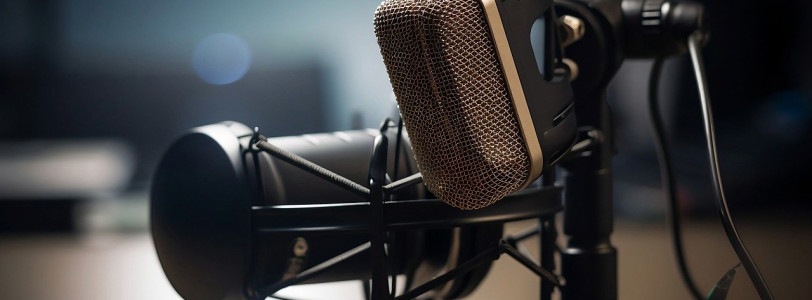Once reserved for niche interests and gamers, podcasts have flourished into a global phenomenon. Most popular with younger audiences, in the UK alone, over 21 million people regularly listen to podcasts.
Since roughly half of all listeners tune in to learn and develop their understanding, podcasting can be a great way of demonstrating your industry knowledge and positioning yourself as an expert. Even a short series can attract hundreds of thousands of listeners.
Take Mining Journal, for example. Despite the rather niche and down-to-earth subject matter, Mining Journal worked with Outset Studios, a professional podcasting company, to reach over 200,000 listeners in just 10 episodes. That kind of audience is often difficult to reach through more traditional content channels, like blogs and whitepapers.
The difficulty with podcasting is the learning curve it takes to get the content right. Not only does it have to be interesting and engaging, but there is also lots of technology and production that you need to get right too. Additionally, while podcasts started as primarily audio content, most now combine audio and video content, increasing complexity.
With these challenges in mind, here are four key benefits of starting a podcast for your business along with a few tips to help you get started.
1. Podcasts are popular
The main reason to consider starting a podcast for your business is simply that people like listening to them. They are also borderless since you can publish to Spotify or Apple Music, for example, and reach a global audience.
The challenge is in how to cut through the noise. While it is hard to pin down a specific number, there are estimated to be between three and five million podcasts worldwide. Getting noticed by your target audience can, therefore, be tricky.
One way of getting noticed is to demonstrate your commitment. By releasing between three and five episodes in one go, you are much more likely to become featured in the ‘New and Interesting’ section on Spotify and Apple Music.
Another way of getting found is to use podcast SEO. Just like regular SEO, you need to understand your target keywords and use them in a well-curated podcast description as well as your episode synopsis. It’s always a good idea to include transcripts of the podcast as well, not only for great SEO but also to benefit those who are hard of hearing (or who just prefer written content). The transcript can also be converted into captions for video content.
Adding timestamps and other markups to your YouTube videos also makes them more searchable. Again, knowing your audience and keywords is essential to ensure that your podcasts speak to your audience’s questions using searchable words and phrases.
If you really want to gain traction fast, you should consider some advertising. Create some short clips and trailers for your podcast and funnel some money into advertising on YouTube, Spotify and/or Apple Music. Make sure your ads are no longer than 15 seconds in order to grab interest and tease the content.
Finally, a great way of attracting a new audience is by featuring guests on your podcast.
2. Cross-promotion with guests
Bringing in guests is a great way of cross-promoting your podcast and piggybacking on your guest’s existing audience. Featuring guests also enhances the perception of you as a thought leader, while providing more variety within your content.
Hosting guests can, however, pose a number of challenges. Sometimes the biggest challenge is getting your guest to actually show up. If you are running some pre-show marketing and advertising to hype the episode, it is embarrassing when your guest then cancels at the last minute.
One tip is, once you have booked the guest, to immediately book their travel and accommodation ─ even if it’s just an Uber to the studio. Even though it may cost a little more, it locks them into a commitment and they will be less likely to back out.
Sometimes guests will still cancel. It’s unfortunate but can’t be helped. One way of dealing with a guest who can’t make it is to switch to a remote interview. While video calls may suffer from connection difficulties or low quality, they are better than nothing. If you are working with an established studio, you might also have the opportunity to send the guest to their local studio to do the recording, meaning no loss in quality.
If all else fails, have a backup plan. If you pin all of your content ideas on your guest showing up, you will, once in a while, be caught short. Always have backup content ideas and a host who knows how to adapt on the fly.
If you are featuring a guest, always have an introduction meeting before recording. The meeting will help you get to know the guest and form a relationship between the guest and the host ─ translating into a warmer, friendlier relationship on air.
3. Podcasts are interactive and engaging
Of all forms of content, podcasts are one of the most interactive. You can podcast about anything, whether it’s incredibly niche or fairly broad and generic, and there will be people interested in listening and learning more.
What’s more, people will have opinions, meaning you can get real interactions with your listeners. Interaction tends to happen in one of three ways: asynchronous interaction via comments, instant interaction via livestream commenting, or real-time interaction via call-ins.
Find ways to include interaction within your podcast and you’ll create a lot of audience engagement. Comments can also be very useful when coming up with new content ideas, or you could include a Q&A segment within your regular podcast.
4. Podcasts are multi-format
One of the best business cases for podcasts is that the content can be easily chopped into a multitude of different formats for different channels. A long-form podcast can be chunked into clips for social media and YouTube, segments for marketing and advertising, and even turned into blog posts.
Among all content types, podcasts are perhaps the most multi-purpose, making them one of the most cost-effective as well. A single 30-minute episode could produce a hundred pieces of content in the form of social clips, soundbites, and blogs.
Getting content that can be chunked down into pleasing sound bites is, however, harder than you might imagine. It’s all down to your pre-production ─ it takes a lot of planning to find the ideal structure for the episode. You also need a good host who knows how to summarise things neatly, when to pause and when to move things along.
If you are featuring a guest, let them know the questions in advance so that they can prepare useful and concise answers that are far richer in information. It’s always hard to think of everything in the moment. It is then the job of the host to make the questions seem natural and organic despite the preparation.
It can also be useful to coach less experienced guests on how to minimise filler words like ‘err’ and ‘erm’ and when to take pauses. A guest who talks at length, with lots of filler words and very few pauses, makes for a difficult editing process. How can you chunk up an endless stream of speech?
One idea can be to have an agreed signal, such as the host raising their hand slightly, so the guest knows when to bring their sentence to a natural end so the host can speak. This also helps minimise crosstalk – another nightmare for the editing room.
If you are setting up cameras to record video content at the same time, it’s always best to have a few different angles set up. Then, when it comes to editing, you can simply switch between angles to make the cuts appear seamless.
A final tip to help with editing is to have someone off camera making note of the times when particularly interesting things were said. This makes the editor's job a lot easier and means you know how to market the episode before the final edit is complete.
Summary
Podcasts can be an amazing marketing tool for businesses. They do, however, take a lot of planning to get right. Between content, production, marketing, guests, hosting and editing, there are lots of pieces that need to align.
These tips should help you get started. However, it is always useful to have at least one person on your team who is experienced in producing podcasts, or alternatively, use an agency that can get these things right the first time.
Production quality really does matter ─ not only does it keep your audience engaged but it ensures that the content can be used for a multitude of channels, giving you the best value for money.
ABOUT THE AUTHOR
Michael Olatunji is co-founder of Outset Studio, a full-service podcast and video production studio in London. Outset specialises in pod- and vlog- casts, live streams and live shopping. The team works collaboratively with the client to make high-quality content that attracts an audience and increases engagement. Recording can be done at their studios in London or on location. Whether a client simply wants studio space or would prefer someone to manage the full production, Outset’s experienced teams have it covered.
- Web: www.outsetstudio.com
- Facebook: https://www.facebook.com/outsetstudiogroup/
- Instagram: https://www.instagram.com/outsetstudio/ [@OutsetStudio]
- LinkedIn: https://uk.linkedin.com/company/outset-studio
- Tiktok: https://www.tiktok.com/@outsetstudio [@OutsetStudio]









0 Comments